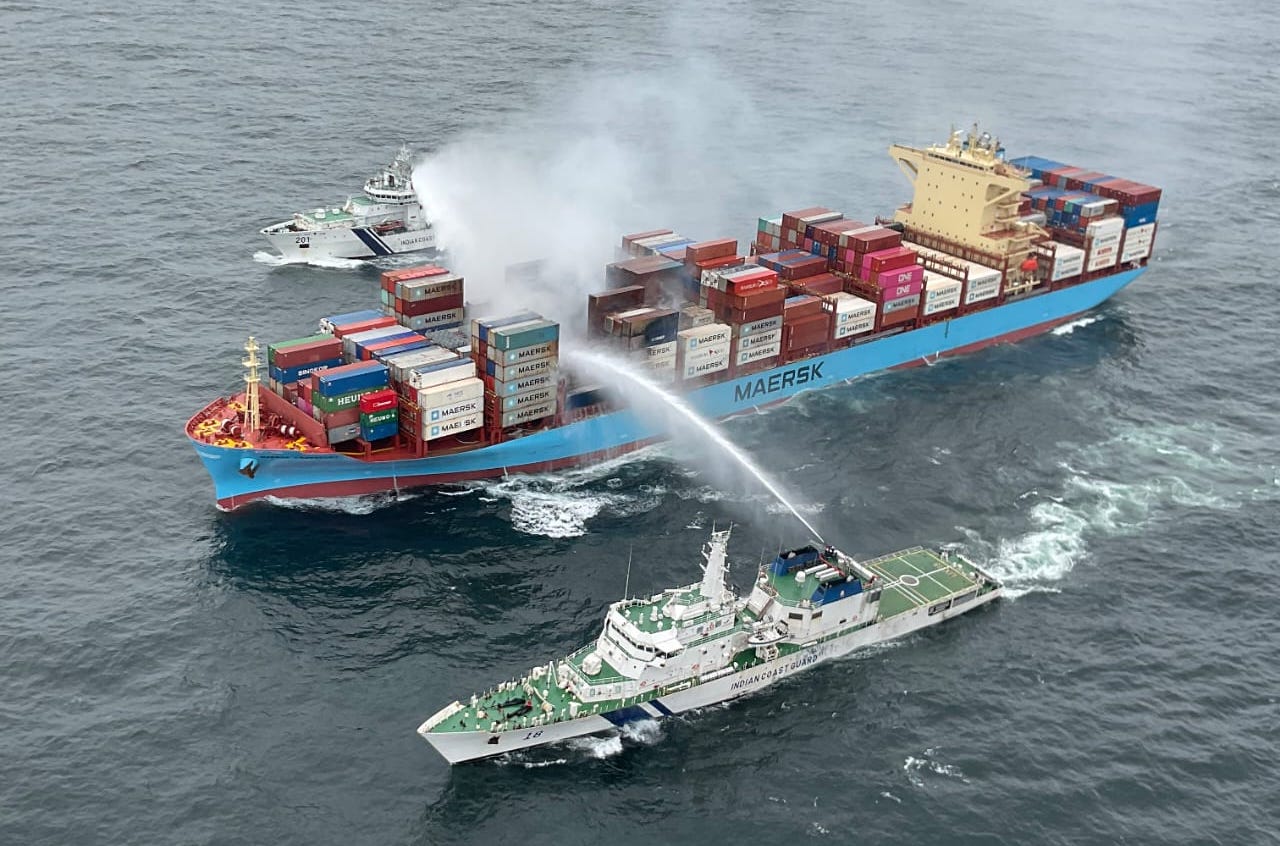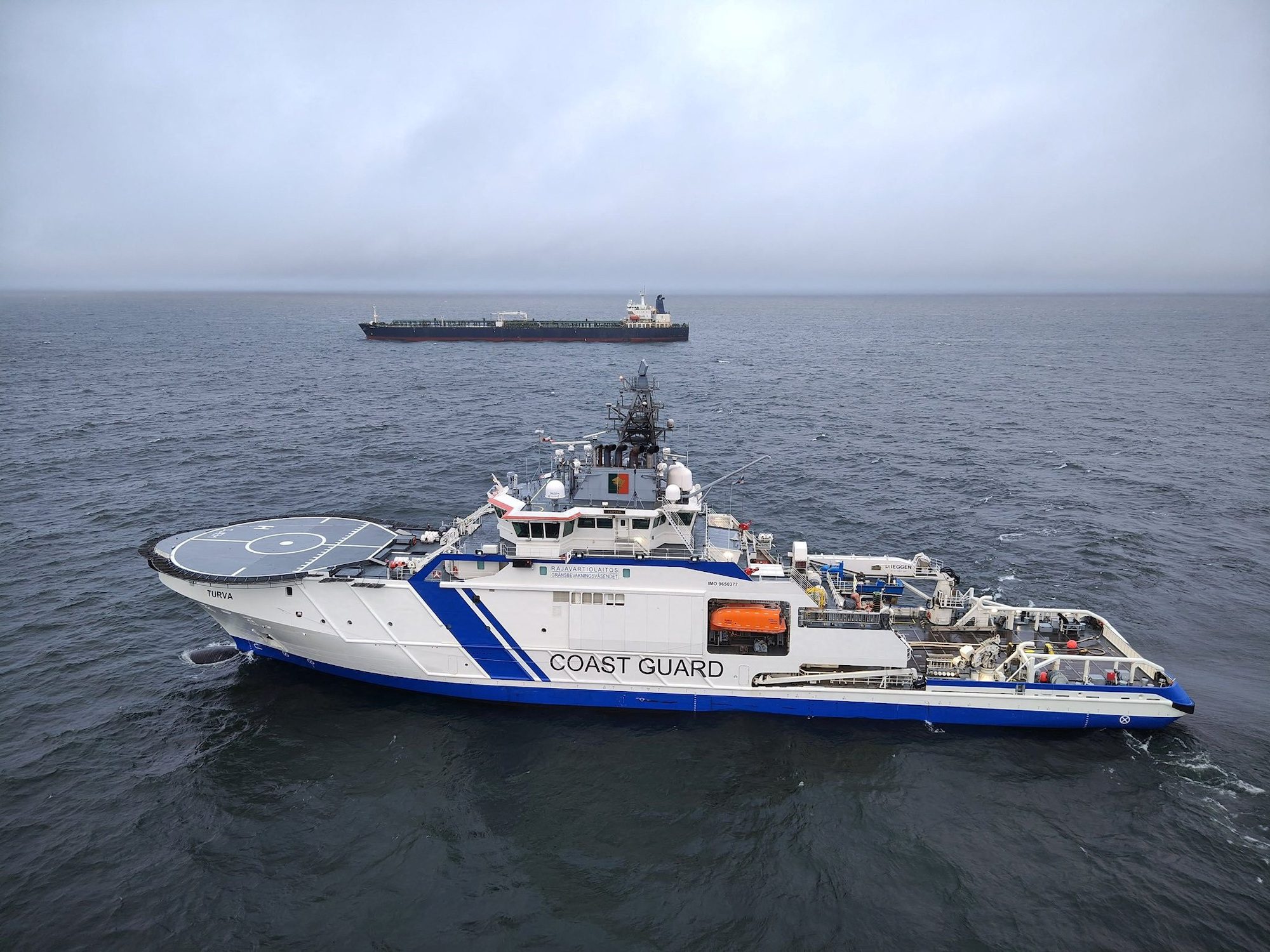By Julian Lee (Bloomberg) —
Two months into Moscow’s threatened oil output cut, there is no sign of a sustained drop in crude flows out of the country.
Russia’s exports jumped back above 4 million barrels a day in the week to April 28, a level it has surpassed only once before since its troops invaded Ukraine in February 2022, according to tanker-tracking data compiled by Bloomberg. Flows were virtually unchanged on a four-week average basis.
Seaborne flows still aren’t reflecting a production cut that the energy ministry said was as big as 700,000 barrels a day in March. It doesn’t appear that refinery runs in Russia have dropped much either. Figures show processing rates remained virtually unchanged from the start of the year and, in the first 19 days of April, were 720,000 barrels a day higher than the same full month last year.
Moscow has halted publication of crude and condensate production data, perhaps to make it more difficult to assess whether it really has cut output before reductions that are due to be made from this month by several of its OPEC+ partners.
In a sign that it’s strapped for cash to fund its war, the Kremlin is turning again to its oil industry, exploring options ranging from cutting fuel subsidies to a windfall tax as it seeks to boost budget revenue. Meanwhile, President Vladimir Putin exempted oil flows under existing contracts to so-called friendly nations from an export ban intended to halt shipments to foreign buyers that adhere to a price cap imposed by the Group of Seven nations.
The diversion of crude previously delivered to Poland and Germany through the Druzhba pipeline has boosted seaborne flows during the early part of this year to an average of 3.32 million barrels a day, compared with 2.94 million barrels a day during the equivalent period at the end of 2022. Flows to Germany halted at the end of 2022 and deliveries to Poland were stopped in late February. Poland’s state-controlled oil refiner PKN Orlen SA has terminated its last contract with a Russian supplier in response to the halt in oil shipments via Druzhba.
Russia’s Lifelines
The combined volume of crude on vessels heading to China and India plus smaller flows to Turkey and quantities on ships that haven’t yet shown a final destination rose for a third week to reach a record 3.39 million barrels a day in the latest four-week period.
As the ultimate destinations of cargoes loading in late January became apparent, flows to China rose to new post-invasion highs, and remained close to those levels in February. Historical patterns suggest that most of the vessels currently identified as “Unknown Asia” destinations and heading for the Suez Canal will end up in India, while those loaded onto very large crude carriers off the north coast of Morocco or, more recently, in the Atlantic Ocean, will head to China.
Ship-to-ship transfer operations into very large crude carriers have shifted to the Atlantic Ocean from the Mediterranean waters off the Spanish north African city of Ceuta, as they did last summer.
The Aframax tankers Nurkez and Crius transferred their cargoes into VLCCs in the Atlantic Ocean off the Canary Islands last week.
At least 62 cargoes, or 44.7 million barrels, have been transferred between ships in those two locations and off the Greek coast near Kalamata since the start of the year.
Russia and India are discussing the creation of joint re-insurance institutes for oil shipments, according to Russian Deputy Prime Minister Denis Manturov, who didn’t rule out that such organizations may appear by the end of the year. Deputy Prime Minister Alexander Novak has said that Russia needs new insurance and reinsurance mechanisms for its oil exports.
Until recently, the country was still relying on Western insurers to cover more than half of the tanker fleet that exports its oil. But one of the oil tanker companies heavily involved in moving Russian oil has lost industry standard insurance for its fleet after falling foul of a Group of Seven price cap relating to the transportation of the nation’s barrels.
Crude Flows by Destination
Crude flows in the week to April 28 jumped by about 680,000 barrels a day from the previous week, to 4.08 million barrels a day. On a four-week average basis, overall seaborne exports were little changed, dropping by 12,000 barrels a day to 3.45 million barrels a day, from their highest in 10 months.
Volatile weekly data are affected by the scheduling of tankers and loading delays caused by bad weather. Port maintenance can also disrupt exports for several days at a time.
All figures exclude cargoes identified as Kazakhstan’s KEBCO grade. Those are shipments made by KazTransoil JSC that transit Russia for export through the Baltic ports of Ust-Luga and Novorossiysk.
The Kazakh barrels are blended with crude of Russian origin to create a uniform export grade. Since Russia’s invasion of Ukraine, Kazakhstan has rebranded its cargoes to distinguish them from those shipped by Russian companies. Transit crude is specifically exempted from European Union sanctions.
Asia
Four-week average shipments to Russia’s Asian customers, plus those on vessels showing no final destination, edged lower to 3.25 million barrels a day in the period to April 28. That’s down just 30,000 barrels a day from the period to April 21.
While the volumes heading to China and India appear to have declined from recent highs, history shows that most of the cargoes on ships without an initial destination eventually end up in one or other of those countries.
The equivalent of 720,000 barrels a day was on vessels showing destinations as either Port Said or Suez in Egypt, or which already have been or are expected to be transferred from one ship to another off the South Korean port of Yeosu. Those voyages typically end at ports in India or China and show up in the chart below as “Unknown Asia” until a final destination becomes apparent.
The “Other Unknown” volumes, running at 386,000 barrels a day in the four weeks to April 28, are those on tankers showing a destination of Ceuta, Kalamata or no destination at all. Most of those cargoes go on to transit the Suez Canal, but some could end up in Turkey. An increasing number are being transferred from one vessel to another in the Mediterranean, or more recently, in the Atlantic Ocean for onward journeys to Asia.
Europe
Russia’s seaborne crude exports to European countries slipped to 63,000 barrels a day in the 28 days to April 28, with Bulgaria the sole destination. These figures do not include shipments to Turkey.
A market that consumed more than 1.5 million barrels a day of short-haul crude, coming from export terminals in the Baltic, Black Sea and Arctic has been lost almost completely, to be replaced by long-haul destinations in Asia that are much more costly and time-consuming to serve.
No Russian crude was shipped to northern European countries in the four weeks to April 28.
Exports to Turkey, Russia’s only remaining Mediterranean customer, rose to 140,000 barrels a day in the four weeks to April 28, recovering nearly two-thirds of the previous week’s drop.
Flows to Bulgaria, now Russia’s only Black Sea market for crude, fell to 63,000 barrels a day, equaling their lowest since the start of 2022, when Bloomberg began compiling the flows in detail.
Flows by Export Location
Aggregate flows of Russian crude jumped to 4.08 million barrels a day in the seven days to April 28, exceeding 4 million barrels a day for only the second time since the start of 2022. Shipments from the Baltic, Black Sea and Pacific were all higher, with flows from the Arctic unchanged from the previous week.
Figures exclude volumes from Ust-Luga and Novorossiysk identified as Kazakhstan’s KEBCO grade.
Export Revenue
Inflows to the Kremlin’s war chest from its crude-export duty rose by $9 million to $56 million in the seven days to April 28, while four-week average income was unchanged at $47 million.
President Vladimir Putin has signed into law another amendment to the way Russia’s oil price is assessed for tax purposes. From June, rates of export duty will be calculated in the same way as those for mineral extraction tax and profit-based tax on oil companies, using a decreasing discount to prevailing Brent prices, rather than assessments of Urals crude. Export duty, which will be phased out at the end of 2023, will be based on a reference export price set $28 a barrel below Brent, with the discount falling to $25 in July and remaining at that level until the end of the year.
The duty rate for April was set at $1.95 a barrel, little changed from March, based on a Urals price of $50.80 a barrel during the assessment period that ran from Feb. 15 to March 14. The rate for May is $1.96 a barrel, based on a Urals price of $51.15 a barrel between March 15 and April 14.
Origin-to-Location Flows
The following charts show the number of ships leaving each export terminal and the destinations of crude cargoes from the four export regions.
A total of 37 tankers loaded 28.5 million barrels of Russian crude in the week to April 281, vessel-tracking data and port agent reports show. That’s up by 4.7 million barrels, or 20%. Destinations are based on where vessels signal they are heading at the time of writing, and some will almost certainly change as voyages progress. All figures exclude cargoes identified as Kazakhstan’s KEBCO grade.
The total volume on ships loading Russian crude from Baltic terminals rose to a four-week high of 1.77 million barrels a day.
Shipments of Russian crude from Novorossiysk in the Black Sea jumped to an 11-month high, with flows rising to 772,000 barrels a day. No Kazakhstani crude was loaded at the port during the week.
Arctic shipments were unchanged at 286,000 barrels a day, with two Suezmax tankers loading in the week to April 28.
Flows from the Pacific rose to a six-week high, with 12 tankers loading at the region’s three export terminals in the week to April 28, up from 11 the previous week.
Eight cargoes of ESPO crude out of 10 loaded during the week are on vessels heading to China. One is heading to India, while the other is showing its destination as Tanjung Pelepas in Malaysia. Previous cargoes heading there from Kozmino have eventually gone on to India.
The remaining volumes heading to unknown destinations are Sokol cargoes that recently have been transferred to other vessels at Yeosu, or are currently being shuttled to an area off the South Korean port from the loading terminal at De Kastri. Most of these are also ending up in India.
Note: All figures exclude cargoes owned by Kazakhstan’s KazTransOil JSC, which transit Russia and are shipped from Novorossiysk and Ust-Luga as KEBCO grade crude.
–With assistance from Sherry Su.
© 2023 Bloomberg L.P.

 Join The Club
Join The Club










